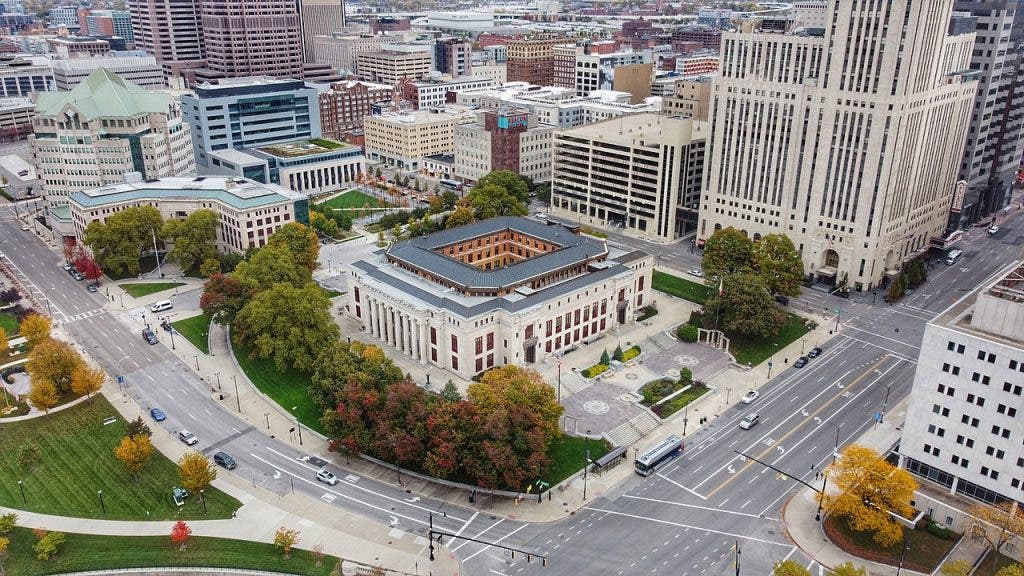Cities could be significantly cooler during summer if we plant enough trees, according to a new study.

Summer’s here, and apart from beaches being popular, it only means one thing: nigh-deadly heat in the city, all around the clock. But we needn’t suffer as we do, a paper reports, if only we’d let trees lend a helpful branch. According to the findings, trees — especially adult ones — can have a significant cooling effect on surface temperatures in their surroundings.
Buildings, on the other hand, had a mixed effect. They made their surroundings hotter but could help reduce overall temperatures in the areas they cast their shade in.
Cool leaves
“We can use the information from our model to formulate guidelines for community greening and tree planting efforts, and even where to locate buildings to maximize shading on other buildings and roadways,” said Jean-Michel Guldmann, co-author of the study and professor emeritus of city and regional planning at The Ohio State University.
“This could have significant effects on temperatures at the street and neighborhood level.”
The study is the first to calculate just how much shaded areas can help lower overall surface temperature and fight against the urban heat island effect. This is generated by the pavement, buildings, and other built surfaces in cities absorbing heat energy from sunlight, which causes cities to be noticeably warmer than their surroundings.
For the study, the team created a detailed 3D digital model of a section of Columbus, Ohio, using this to determine the role of shade (from buildings or trees) in determining the overall surface temperatures in the area, on a summer day, over the course of one hour. The city section was almost 14 sq miles (36 sq km) wide and modeled after a section of northern Columbus selected due to its wide range of land-use types: from single-family homes and apartment buildings to industrial areas and natural parks.
The model was created from 2D maps of the city along with LiDAR (laser radar) data collected by the city from an airplane. Put together, these made for a very accurate replica of the area, along with the exact heights and widths of its buildings and trees. Temperatures recorded in the area on Sept. 14, 2015, from 11 a.m to noon, were also fed into the model. This data was recorded by a NASA satellite, totalling 39,715 measurement points throughout the investigated area.
Finally, the team used the software to calculate how much shadow each tree and building cast during that one-hour interval, comparing these with the temperature measurements. In effect, this allowed them to see how trees and buildings impact the urban heat island effect through the shade they produce. From here, they developed a statistical model that estimates how these elements affected surface temperatures on Sept. 14.
Buildings tended to have a negative impact — they made the city hotter. A 1% increase in the area of a building led to surface temperature increases between 2.6% and 3% on average, the team explains. However, they could also have a positive impact in the area where the building’s shadow fell. If this happened to obscure other buildings, it could help cool things down overall. An increase of 1% in the area of a shaded rooftop led to temperature decreases between 0.13% and 0.31% on average.
Shade on roadways and parking spaces also had a very powerful effect. For example, one of the team’s simulated neighborhoods could be almost 3.5°F cooler if all the trees there were fully grown. Furthermore, if 20 more adult trees were to be added, temperatures would drop by an additional 1.5°F. Which, considering we’re talking about a whole neighborhood, isn’t a lot of trees.
“We learned that greater heat-mitigation effects can be obtained by maximizing the shade on building rooftops and roadways,” Guldmann said.
Green spaces and water bodies unsurprisingly had a huge part to play in lowering temperatures. Even grassy areas had a sizable cooling effect, with shaded grass in particular helping in this regard. Higher total volumes of water bodies and tree canopy in any area were also powerful cooling agents.
“We’ve long known that the shade of trees and buildings can provide cooling,” Guldmann said.
“But now we can more precisely measure exactly what that effect will be in specific instances, which can help us make better design choices and greening strategies to mitigate the urban heat island effect.”
The paper “Impacts of tree and building shades on the urban heat island: Combining remote sensing, 3D digital city and spatial regression approaches” has been published in the journal Computers, Environment and Urban Systems.









